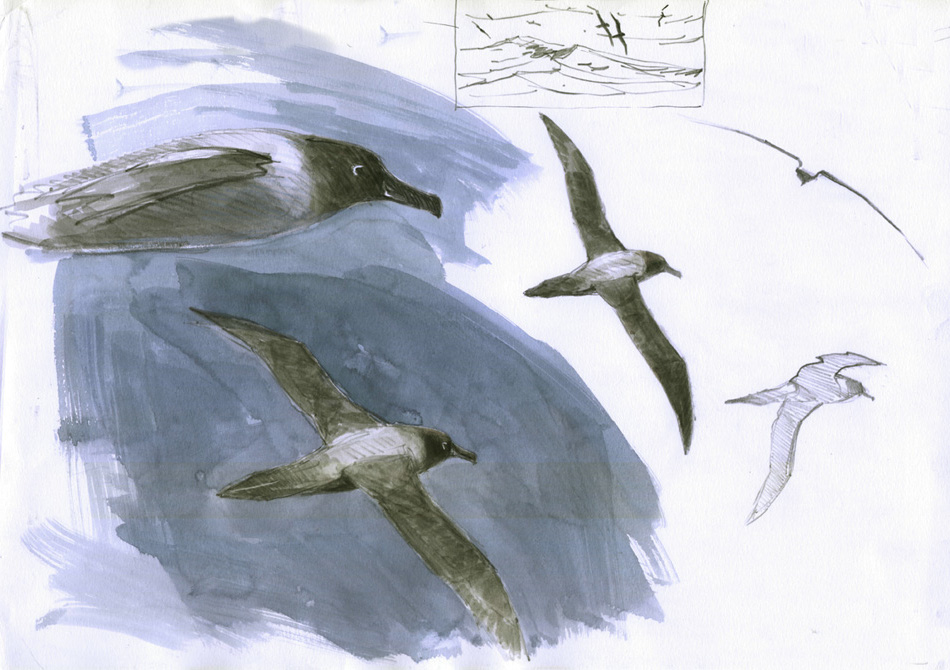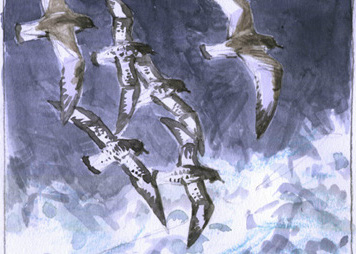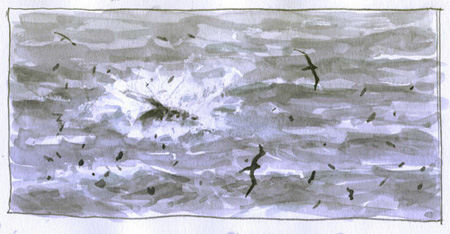In the StudioJanuary 2021 |
Lockdown was tough, but there are so many who had to face far greater difficulties living with the restrictions and consequences of the pandemic. Not being able to be out and about in wild places sketching and painting, I have been spending a lot of time in my studio effectively travelling to wild places by looking back through sketchbook pages. In my mind's eye I have visited South America, the Arctic and Middle East again. I have wandered about the Western Isles of Scotland and fens of East Anglia and felt like I sat for hours on the North Norfolk coast. But most of my time has been spent visiting the Southern Ocean, Falkland Islands and South Georgia, and Antarctic Peninsula. Being a naturalist and artist in residence on expedition ships for the past 10 years has generated a large portfolio of work and it has been exciting looking through all those sketches, notes and paintings again. About now I should have been getting ready for a new adventure. It would have been a first visit to the sub-Antarctic islands of Australia and New Zealand, among them landings on Snares, Macquarie, Chatham, Bounty and Campbell islands. I'm missing the prospect of an adventure and the comradeship of being part of a tight knit crew, and as a keen birdwatcher I know I'll miss seeing spectacular species and capturing dramatic wildlife encounters. Who knows whether those opportunities to travel will happen again - if so, when? |
So, instead of actually being south I have been in the studio working on a relief print interpreting a Southern Ocean experience from a few years ago. The idea came from a fantastic encounter with a pod of humpback whales a day north of Smith Island and the Antarctic Peninsula. There were about 15 - 20 whales in the pod and the sea all around was alive with blows. For a brief moment a blue whale surged through the gathering of humpbacks and there were streams of birds passing by - Antarctic and Cape petrels, black browed and light mantled sooty albatrosses, and a lone wandering albatross. Every now and then one of the humpbacks would breach exploding out of the ocean swell in a spray of energy. That, and passage of birds sweeping along on the power of the wind, created a profound sense of the elemental nature and richness of the Southern Ocean.
|
|
A very graphic response might be one way to capture some of that excitement. A painting could easily get bogged down in fussy detail, but a relief print would allow for bold and simple shapes and just a few limited interlocking colours to simply express an extraordinarily complex and exciting experience.
Printmaking is a process based on the principle of transferring images from a matrix (or a number of matrices) onto another surface, usually paper. Relief is one of a handful of printmaking processes.
The way I work in relief printmaking doesn't seem to allow for fine detail. The medium of the matrix - whether it is wood, linoleum or a plastic (like Foamalux which is what I often use) - simply prevents being 'fiddly' with cutting tools.
The strength of printmaking is in the way it encourages use of bold graphic shapes that, with the application of colour on one or more matrices, creates a complex of strong overlapping patterns to form a final image that seems to be more interesting than the sum of its parts.

For this Southern Ocean print I used 5 matrices (or blocks). The first was a black ‘key’ block; the second a spot block to drop in a warm greyish sienna colour in a specific area only; the third a light warm charcoal grey; the fourth a light blue to pull the elements together; and the final block was a silvery grey green colour.
To cut the blocks and maintain registration (getting the blocks to be in exactly the same place relative to each other every time each passed through the press) they were offset in turn onto each subsequent block. With the cutting of all five blocks tweaked for the final time, editioning the print run began and continued until 12 prints were successfully completed. See more about prints and printmaking.
© 2025 Bruce Pearson. All rights reserved.




